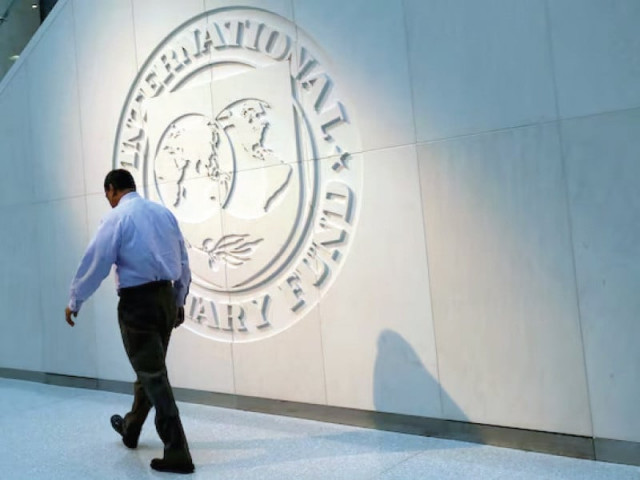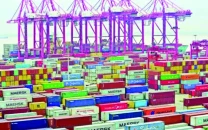No increase in debt-free inflows
External sector-related projections suggest Pakistan will continue relying on IMF

Pakistan has shared a new macroeconomic framework with the International Monetary Fund (IMF), largely aligning with the Fund’s projections but indicating no significant increase in non-debt creating inflows—exports and remittances—during the next fiscal year as well.
The external sector-related projections suggest that the country will continue to rely on the global lender in the medium term to stay afloat. The targets outlined in the framework for the fiscal year 2024-25 budgets appear subdued, reflecting Pakistan’s challenging economic realities, which offer no room for higher sustainable economic growth in the medium term.
Despite the IMF’s push for inflationary measures, including hefty taxes of around Rs1.3 trillion and increases in electricity, gas, and petroleum prices, the government aims to contain inflation at 11.8% and achieve a 3.7% economic growth rate.
Sources revealed to The Express Tribune that the government discussed its key macroeconomic targets for the upcoming budget. They indicated that while the government’s projections for the current account deficit and inflation were lower than the IMF’s, its targets for economic growth, exports, and remittances largely matched those of the IMF. However, there was a notable difference in import projections between both parties.
The Ministry of Finance formulated the macroeconomic targets without significant input from the planning ministry, which, according to the Rules of Business, is responsible for making such projections.
Planning Minister Ahsan Iqbal stressed the need for Pakistan to surpass neighbouring economies on the path to economic prosperity, a goal unlikely to be achieved in the next five years according to the projections shared by the Ministry of Finance with the IMF.
Iqbal expressed confidence that Pakistan could overcome its economic challenges and become a trillion-dollar economy by 2035, a vision not reflected in the projections of the finance ministry and the IMF.
The government and the IMF discussed macroeconomic figures on the same day the Pakistan Bureau of Statistics (PBS) reported a marginal contraction in the country’s large-scale manufacturing sector during the first nine months of the fiscal year, attributed to tight monetary policies and double-digit inflation.
Pakistan informed the IMF of its intention to target a 3.7% economic growth rate in the next fiscal year, slightly higher than the IMF’s forecast.
The government has set the inflation target at 11.8% for the next fiscal year, one percentage point lower than the IMF’s forecast, said the sources.
For the current fiscal year, the government projects inflation at 24%, higher than its target, attributing it to the high base effect, which is expected to lead to an 8% reduction in the inflation rate in the next fiscal year.
The ambitious 11.8% inflation target for the next fiscal year may face challenges due to the IMF’s demand for approximately Rs1.3 trillion in additional taxes and an anticipated increase of up to Rs7 per unit in electricity prices from July.
Sources involved in discussions with the IMF revealed to The Express Tribune that the IMF is not allowing Pakistan to significantly reduce interest rates in the next fiscal year, which will keep the government’s budgetary constraints high.
Compared to the IMF’s projection of a $4.6 billion current account deficit in the next fiscal year, the finance ministry anticipates the deficit to be $4.2 billion, said the sources. The IMF’s current account deficit estimates for this fiscal year have deviated significantly by 113%, still appearing higher.
The government now expects the current account deficit to reach $1.8 billion for this fiscal year, compared to the IMF’s initial estimate of $6.4 billion made in June last year.
The government anticipates growth in the next fiscal year from the agriculture sector, which has recovered from the floods.
The agriculture sector is projected to grow by 3.5%, industry by 4%, and the services sector by 3.8%.
In the next fiscal year, cotton production is expected to increase by 30% to 10.9 million bales, sugarcane production by 1% to 85.4 million tonnes, and wheat production to 30.2 million tonnes. For this fiscal year, wheat production is estimated at 29.7 million tonnes, as per information shared with the IMF.
There might be a marginal 6% increase in exports during the next fiscal year, reaching $32.7 billion, compared to about $31 billion in exports for this fiscal year. Remittances are also expected to grow by over 6% to $30.6 billion in the next fiscal year, while for the outgoing fiscal year, remittances are projected to grow to $28.5 billion due to exchange rate stability.
However, the combined projected increase in exports and remittances is lower than the forecasted increase in imports for the next fiscal year.
The government expects imports to grow to nearly $58 billion compared to $52 billion this year, still lower than the IMF’s estimate of $61 billion for the next fiscal year.
Due to a better crop outlook, post-flood fertility, and agriculture facilitation measures, food-related import bills are not expected to pressure the overall import bill.
Pakistan is implementing import curb measures with IMF consent, as the Fund’s programme failed to unlock the required foreign funding during this fiscal year.
Published in The Express Tribune, May 16th, 2024.
Like Business on Facebook, follow @TribuneBiz on Twitter to stay informed and join in the conversation.


















COMMENTS
Comments are moderated and generally will be posted if they are on-topic and not abusive.
For more information, please see our Comments FAQ